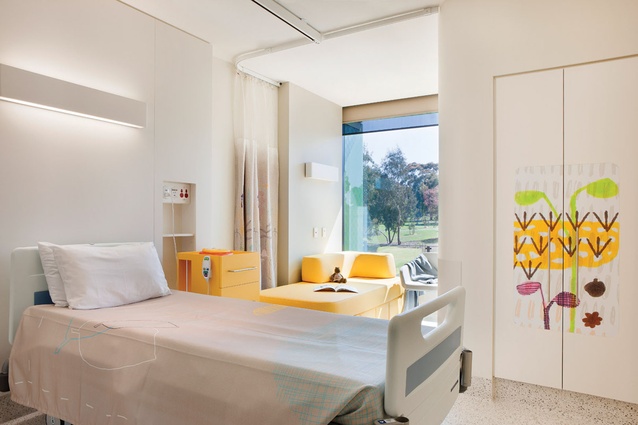Making more of our relationship to light
Opportunities to use daylight in architecture are as abundant as light itself.
“The laws of physics are so benign, so generous. And get this … That rain is our sunlight, Professor Beard. It drenches our planet, drives our climate and its life. A sweet rain of photons, and all we have to do is hold out our cups!” (Ian McEwan, Solar).
It’s simple and obvious: “all we have to do is hold out our cups” and capture the natural light that “drenches our planet.” Consider that on any given day the illuminance of the average office building’s facade is about 100,000 lux, and all we need to light a desk inside that building is 320 lux. By better using the visible parts of daylight while excluding unwanted heat, we can reduce the amount of energy required for lighting while also curtailing energy usage for heating and cooling. Smarter use of daylight equals increased sustainability – it’s that simple.
But it goes further than that. Incorporating more daylight into our buildings helps us maintain the deep relationship we have with it. We may live in a virtual world of bright city lights, but our bodies still work on a continuous twenty-four-hour cycle. In a building with ample natural light, people see and feel the rhythm of the day, the time of day, the weather patterns and a sense of season. The dance of daylight promotes human comfort and wellbeing.
Yet for all the benefits of natural light, our homes and offices are nearly entirely artificially lit. Pressure to reduce energy consumption is being offset by the increasing sophistication, efficiency and cost effectiveness of artificial lighting options. The flexibility of today’s artificial light technology means we can design and light buildings of any shape, size and orientation, with little or no consideration of ambient light. We are relying increasingly on engineering solutions, rather than natural solutions, to light our buildings.
In many ways this is taking the easy way out. Daylight design can be a difficult science to master. While the sun emits a more or less constant light, the rotation of the Earth, the tilt of the Earth’s axis and ever-changing weather conditions mean that each hour of each day produces a different level, and even a different colour, of natural light. We cannot predict exact light levels at any given moment.
By contrast, artificial lighting can provide constant, predictable light – something that becomes even more important when code requirements, such as those defined by Section J of the Building Code of Australia, specify required outcomes in any given situation. But, as already described, this comes at a cost of increased energy use and isolation from Mother Nature.
We can do better. Light is what architects do well. Architecture is at its heart the art and science of daylight. It is one of the first aspects considered in planning spaces. In architectural and vernacular buildings, there exists a rich history of playing with light and space. Churches and cathedrals use light to inspire a connection to God. Houses, factories and offices use light for practical purposes. Hospitals (sometimes) offer patients views to nature to assist in their recuperation. Architects intuitively understand daylight design.
The skill of daylighting lies in working with the principles of design and with daylight analysis, in testing how light responds to surfaces and space. It lies in understanding the behaviour and composition of light, and in appreciating how humans respond to it.
Working with a moving and changeable light source gives architects an opportunity for design innovation. Daylight design opens the possibility of the unexpected play of light that can delight and inspire. It leads to the creation of buildings that are more open to the nuances of light rather than offering the monotonous predictability of engineered lighting systems.
There are many fine examples of architecture that is inspired by light. Using the law that the angle of reflection equals the angle of incidence, Dr Helmut Köster, of Köster Lichtplanung in Germany, has designed a reflective metal screen that reflects incoming sunlight onto the ceiling. This enables daylight to penetrate more deeply into a typical office space, which means that there is less reliance on artificial light. In the Philippines plastic water bottles are used to pierce roof sheeting to become the simplest of skylights in poor communities. The plastic bottles are partially filled with water and bleach to diffuse the light and prevent contamination, producing the same amount of light as a fifty-watt globe at no ongoing cost.
Innovation can also be found in the combination of artificial lighting with daylighting. Indeed the integration of daylight can be much easier if we combine the two. Inexpensive lighting such as LEDs can be used adjacent to windows to reduce glare. Using different colours to represent different temperatures in lamps can reinforce the colours of daylight specific to a building’s orientation. We can create different light levels and light qualities by understanding materials, colours and the use of diffusing materials to direct and screen light. The external skin of a building can even be conceived as a giant light filter, rather like a giant lamp fitting. Buildings can be designed to be dynamic, responding to changing daylight conditions and allowing light in as needed.
Opportunities to take advantage of daylight in architecture are as abundant as the light itself. While Ian McEwan, in Solar, notes how inept we have been at making use of the energy of the sun, we can be better at making use of its light.











